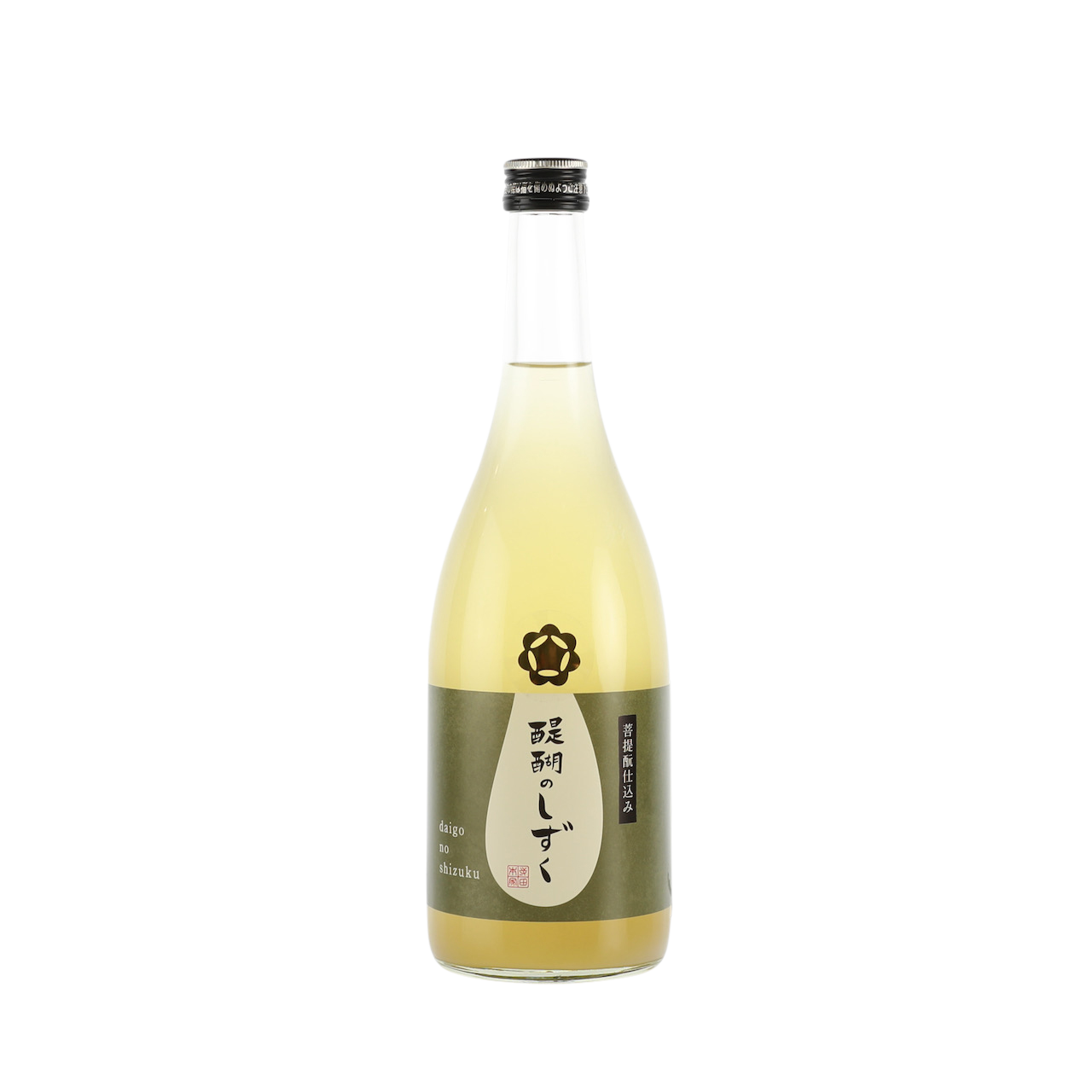
Daigo no Shizuku 2024
Daigo no Shizuku 2024
Established in 1673, Terada Honke have been brewing continuously for over 345 years. They are purveyors of only natural yeast brewing, working almost exclusively with traditional Kimoto & Yamahai starter methods. This Daigo no Shizuku is a very unique Sake. It is produced using the Bodaimoto method, which is known as a ‘pre-modern’ method of creating Sake, first originating from a temple in Nara. The resultant Sake is wildly different from many, with a full body showing sweet fruit and a pickled ume & citrus character. It’s acidity is lively and refreshing.
*Bodai-moto is a starter method created by combining raw polished rice, a small amount of cooked rice and water and incubated for anywhere from three - ten days. During this time lactic bacteria falls into the mixture and the liquid becomes sour water. After this time frame the raw rice is taken away and steamed before being returning to the sour water. Then an addition of Koji rice is added (in Terada Honke’s case around 40% of the volume of raw rice). Then fermentation by natural yeast takes just two weeks. Then just a simply gentle pressing in a ‘Fune’ or horizontal press before being bottled.
DETAILS
+Couldn't load pickup availability

Daigo no Shizuku 2024
Terada Honke
Chiba
NOTES
YEAR: 2024
RICE TYPE: Koshi-Hikari
RICE POLISHING: 90%
ALCOHOL: 10.5%
YEAST STRAIN: Natural
SERVE: Chilled
Classification
Junmai • Pure Rice Sake
Muroka • No charcoal filtration
Genshu • Undiluted
Bodaimoto • Pre-modern brewing
STORAGE & Handling
STORAGE: Store Hiire [pasteurised] sake in a cool dark place, trying to avoid direct sunlight.
HANDLING: Once opened this sake will last well for at least 3 - 4 weeks, ideally in a refrigerator.
| Fragrance | (4/5) |
| Impact | (4/5) |
| SweeTness | (4/5) |
| Acidity | (2/5) |
| Presence | (4/5) |
| Earthiness | (3/5) |
| Tail | (4/5) |

Terada Honke
Most of Chiba prefecture lies on the hilly Bōsō Peninsula, a rice farming region, the East coast of which is known as the Ninety-Nine League Plain, an especially productive area. The Kuroshio Current [or Black Tide] flows around Chiba’s shores, which keeps it relatively warmer in winter and cooler in summer than neighbouring Tokyo.